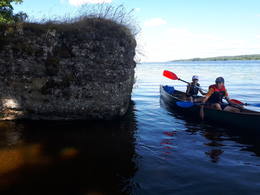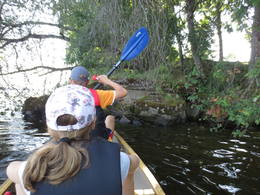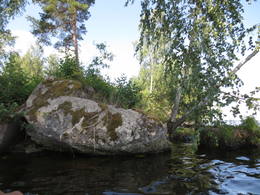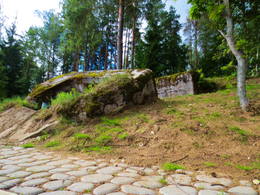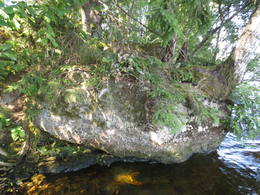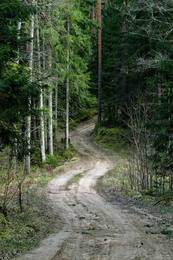Efforts by residents of Keguma to save the power plant
On June 22, 1941 (Sunday), the events of World War II began in Latvia. The wave of war “passed” over Ķegums without major battles. As the Soviet army hastily retreated, Russian soldiers also raided the Tome country houses to get food for themselves.
To protect the residents, we established a security group with a contact point at the Tomes power plant. A power plant employee, Aldermanis from the “Stuteni” house, and a technician came to our power plant with a request from Director Krasovskis to help prevent the expected explosion of the power plant.
The Russian security management has requested a plan of the power plant from Director P. Krasovskis and a person who could show them the points of interest. Boxes of dynamite have been placed in the tunnel, we need to be able to enter and cut the connected wires. We act quickly and carefully, using the attic of the Biķi farm house for observation.
Soldiers dressed in Russian uniforms are allowed to cross the bridge, but privates are detained until their documents are checked.
By “obtaining” the uniforms of four Russian soldiers, our power plant workers infiltrate a larger group of Russians who were walking across the bridge.
The technician, as an administration person with special permission, could talk to the bridge guards. As planned, the technician met our people and they managed to sneak into the shaft and cut the wires. The next day, the technician arrived with gratitude from Mr. Krasovski for the work done. Our informants warned that a bomb-triggering device had been placed in the command post, which would indicate damage to the wires. We watched to see if the Russian bombers would detect the damage and raise the alarm. Events accelerated. The military parts of the bridge guard were replaced by police guards in civilian clothes (with an inscription on their sleeves). There was unrest, and when some German armored vehicles appeared on the road, the power plant was left without a guard. At the technician's suggestion, we took over the guard as volunteers and for a few days our men guarded Kegum. Mr. Krasovski arrived with his staff, a German armored vehicle drove up and its commander spoke briefly with the management and left.
The German political leadership and the head of the Riga district, Veida, arrived from Riga. He personally thanked me and the Tome guards for our patriotic work. We received a salary, the first German money in Latvia, and a call to serve in the police... We were pleased that we had fulfilled Mr. Krasovskis' request and protected our Ķegums power plant together.
Now, decades later, I understand the danger of that moment for Kegums and the enormous efforts of Director Krasovskis to save our power plant with all his might.
However, in June, as the Red Army retreated, a bomb was dropped on the 80-meter 6th span of the Kegums Bridge to somewhat hinder Hitler's army's advance to the east. The power plant continued its daily work. The bridge was restored to its wooden structure within two months.
Then the damage had to be repaired by a group of builders under my supervision, building ladders and a bridge over the blown-up section so that work could continue. Later, a suspension bridge was built because gravel for concreting had to be brought from Birzgale. One trolley could be moved over this bridge at a time. There was a lot of work.
Andersone, R. 2004. Kegums hydroelectric power plant. p. 69.
Related timeline
Related objects
German army concrete fire point at the Ķegums HPP reservoir at the mouth of the Žega River
Located in the Ķegums HPP reservoir at the mouth of the Žegums River (opposite the Žegums House), on its left bank. One of the most visually and scenically impressive and also better preserved concrete fire points washed by the waves of the Daugava. It can be seen from a greater distance. A footbridge has been built from the shore to the top of the fire point (overgrown with grass). Narrow-gauge railway (?) tracks are built into the concrete walls of the fire point. You can enter it from the footbridge. This is one of the fire points of the German army's World War I defense line on the left bank of the Daugava, which can be more or less traced along the entire length of the left bank of the Daugava. The aforementioned defense line is a large-scale military system that has not yet been truly evaluated as a single entity. The remains of the fire point can be viewed by boating along the Ķegums HPP.
German army concrete fire point on the upper bank of the Ķegums HPP opposite Anduli
It is located about 1.2 km east of a small stream widening (the stream flows into Lejasgrantiņi) at the top of the steep bank slope of the Ķegums HPP opposite Anduļi. The bank in this place is overgrown with forest and undergrowth, so only a keen observer will notice this fire point from the side of the reservoir. The fire point is well preserved, as it has not been damaged by bank erosion. This is one of the fire points of the German army's World War I defense line on the left bank of the Daugava River, which can be more or less traced along the entire length of the left bank of the Daugava River. The aforementioned defense line is a large-scale military system that has not yet been properly evaluated as a single entity. The fire point can be viewed by boating along the Ķegums HPP, as it is located on private territory.
Remains of a German army concrete fire point in the Ķegums HPP reservoir opposite Sidrabiņi
Located about 0.25 km east of the Ķegums HPP reservoir bay near Silapūpēži, towards Jaunjelgava, opposite the Sidrabiņi farm. The fire point has partially sunk into the water and broken into several parts, resembling a pile of construction debris. The bank is overgrown. This is one of the fire points of the German army's World War I defense line on the left bank of the Daugava, which can be more or less traced along the entire length of the left bank of the Daugava. The aforementioned defense line is a large-scale military system that has not yet been fully evaluated as a single entity. The remains of the fire point can be viewed by boating along the Ķegums HPP. About 150 m west of the Daugava bank, the remains of another fire point have sunk into the water.
Remains of a German army concrete fire point at the Kegums HPP reservoir opposite Jaundauguļi
Located on the shore of the Ķegums HPP reservoir, about 0.6 km east of the Žega mouth, opposite Jaundauguļi. The fire point has slipped from the shore into the water and split into several parts. Two larger birches have grown into it, and a thicket has grown. One part of it is connected to the shore by a footbridge. This is one of the fire points of the German army's World War I defense line on the left bank of the Daugava, which can be more or less traced along the entire length of the left bank of the Daugava. The aforementioned defense line is a large-scale military system that has not yet been fully evaluated as a single entity. The remains of the fire point can be viewed by boating along the Ķegums HPP.
German army concrete fire point on the banks of the Ķegums HPP near Puduri
Located on a peninsula at the mouth of the Konupīte River (now a flooded extension of the river) in the Daugava, in the territory of the Puduri recreation complex. As a result of wave erosion, the fire point has tilted towards the river. To prevent erosion of the banks, the banks of the reservoir are reinforced with a concrete protective wall. The fire points of the German army's defense line during the First World War can be traced more or less along the entire length of the left bank of the Daugava. The aforementioned defense line is a large-scale military system that has not yet been properly evaluated as a single entity. The fire point can be seen well when taking a boat trip along the Ķegums HPP.
Remains of a German army concrete fire point on the shore of the Ķegums HPP reservoir opposite Silapūpėžys
Located about 0.1 km east of the Ķegums HPP reservoir bay near Silapūpēži, towards Jaunjelgava. The fire point has partially sunk into the water, overgrown with trees, bushes and other vegetation, and to the uninitiated, from a greater distance from the water side, it may resemble a larger stone. One of the landmarks is a birch tree growing on it. This is one of the fire points of the German army's World War I defense line on the left bank of the Daugava, which can be more or less traced along the entire length of the left bank of the Daugava. The aforementioned defense line is a large-scale military system that has not yet been fully evaluated as a single entity. The remains of the fire point can be viewed by boating along the Ķegums HPP. About 150 m east of the Daugava bank, the remains of another fire point have sunk into the water.
Possible location of Otomars Oškalns bunker
A remote and difficult-to-access location is a large forest massif about 200 m west of the Žega River and about 0.5 km southwest of the Žega floodplain. It is recommended to go to the mentioned place on foot or by bicycle, using LIDAR maps and geographical coordinates. In the mentioned place, there is a natural dune ridge about a kilometer long (in the W – E direction) and half a kilometer wide (in the N – S direction), covered with coniferous forest. In the upper parts of the northern and eastern slopes of the dune massif, there are well-preserved trenches, presumably from the Second World War. Harijs Jaunzems (a former engineer of the Ķegums HPP) believes that a bunker of a Red Army partisan unit formed by Otomars Oškalns was located in this area (the specific point is unknown).
Prince Leopold Road (Prinz – Leopold Straße)
The name of the World War I site (road) is “Prinz – Leopold Straße” – Prince Leopold’s Road. A historical forest road or its location, about 7 km long, began at the junction of the Great Kurfürsten Damm and Kaiser Damm at the so-called Kurland Monument (Kurland Denkmal) and winds through the forest towards Birzgale, connecting with the World War I narrow-gauge railway line: Lāčplēsis – Latgale. West of the road and about 2 km south of the Kurland Monument (Kurland Denkmal) is a World War I shooting range. Today, the Prince Leopold Road can be walked, cycled and driven (in suitable conditions). The road crosses the Konupīte and a tributary of the Žega.
It is believed that German army soldiers, who spent a long time on the left bank of the Daugava River, named this road after Prince Leopold of Bavaria (1846–1930), who led the German and Austro-Hungarian forces on the Eastern Front during World War I.





